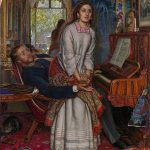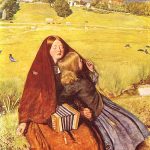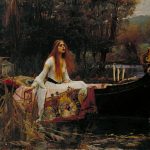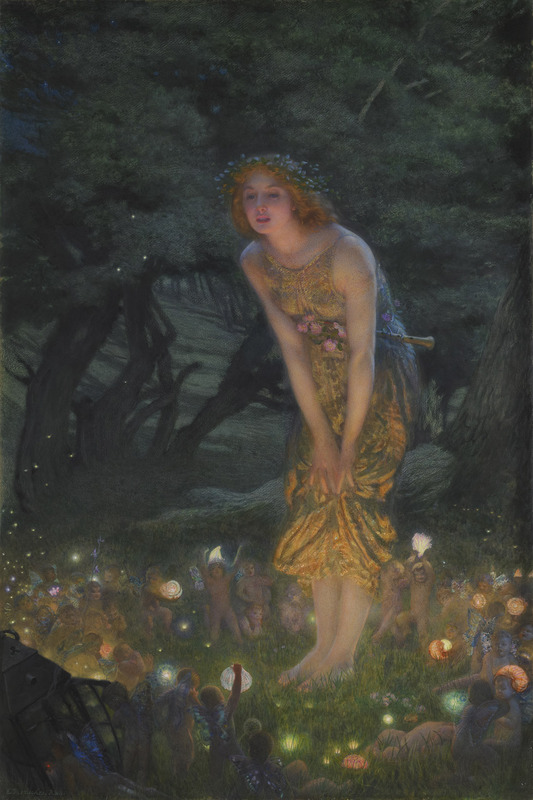
Edward Robert Hughes (1851–1914) was a pivotal figure in the late Victorian art scene, blending the romantic Pre-Raphaelite tradition with the burgeoning symbolist movement. Born in London, England, on November 5, 1851, Hughes was part of a rich artistic lineage, being a nephew of the renowned Pre-Raphaelite artist Arthur Hughes and associated through family ties with the painter Ford Madox Brown. This background immersed him in the artistic milieu of his time from an early age, deeply influencing his career path and artistic development.
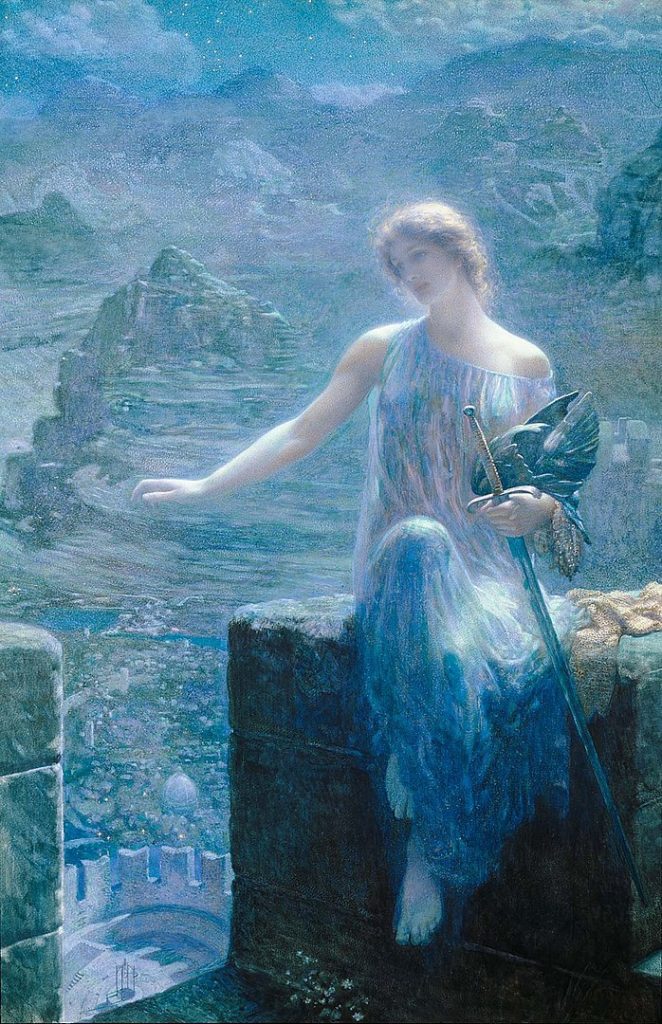
Hughes received his formal art education at the Royal Academy Schools, where he was exposed to a broad range of artistic theories and techniques. However, it was his affiliation with the Pre-Raphaelites, known for their detailed, vivid, and often morally charged works, that left a lasting imprint on his style. Hughes worked closely with William Holman Hunt, one of the founding members of the Pre-Raphaelite Brotherhood, assisting him with the meticulous and labor-intensive technique known as “stippling.” This experience honed Hughes’s skills in achieving intense color saturation and luminosity, characteristics that would define his own works.
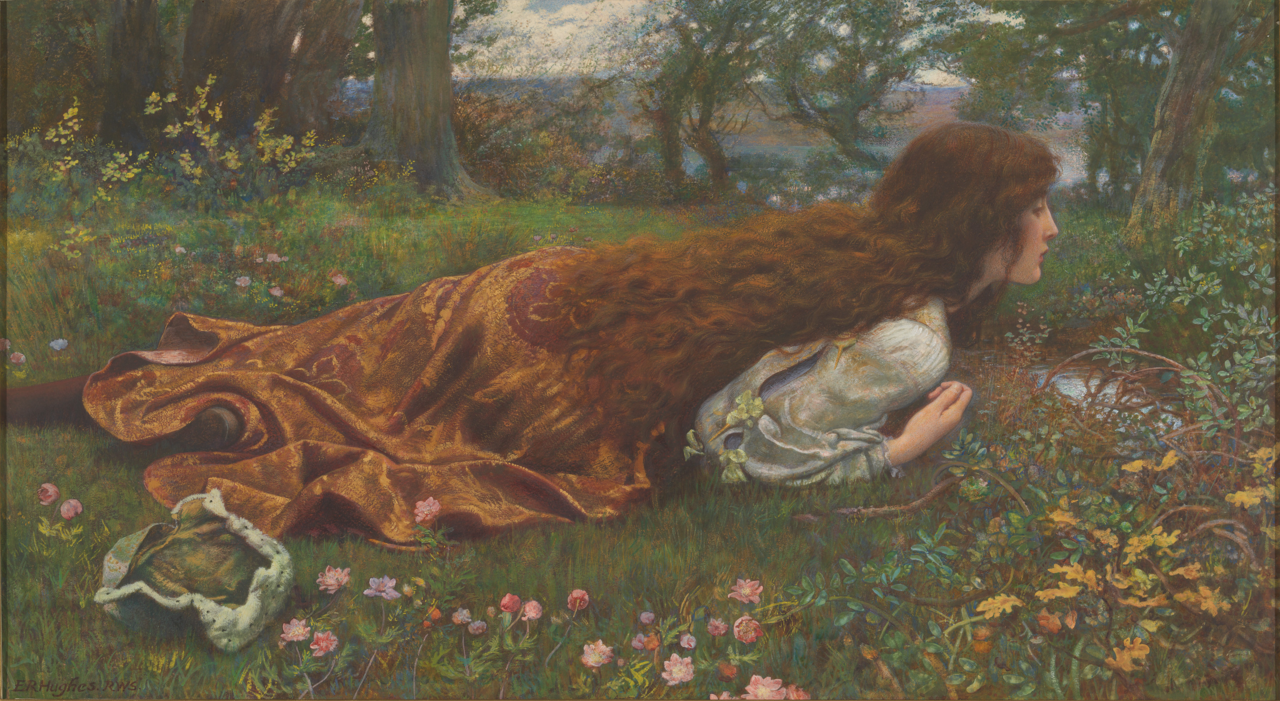
Despite the influence of the Pre-Raphaelites, Hughes developed a distinct style that also incorporated elements of Symbolism, characterized by dreamy landscapes, ethereal figures, and a fascination with the mystical and the supernatural. His paintings often depicted scenes from literature, mythology, and his own imagination, imbued with a sense of melancholy and introspection. “Night with her Train of Stars” (1912) is perhaps one of his most emblematic works, showcasing his skill in creating enchanting, otherworldly scenes that transport viewers to a realm beyond the tangible.
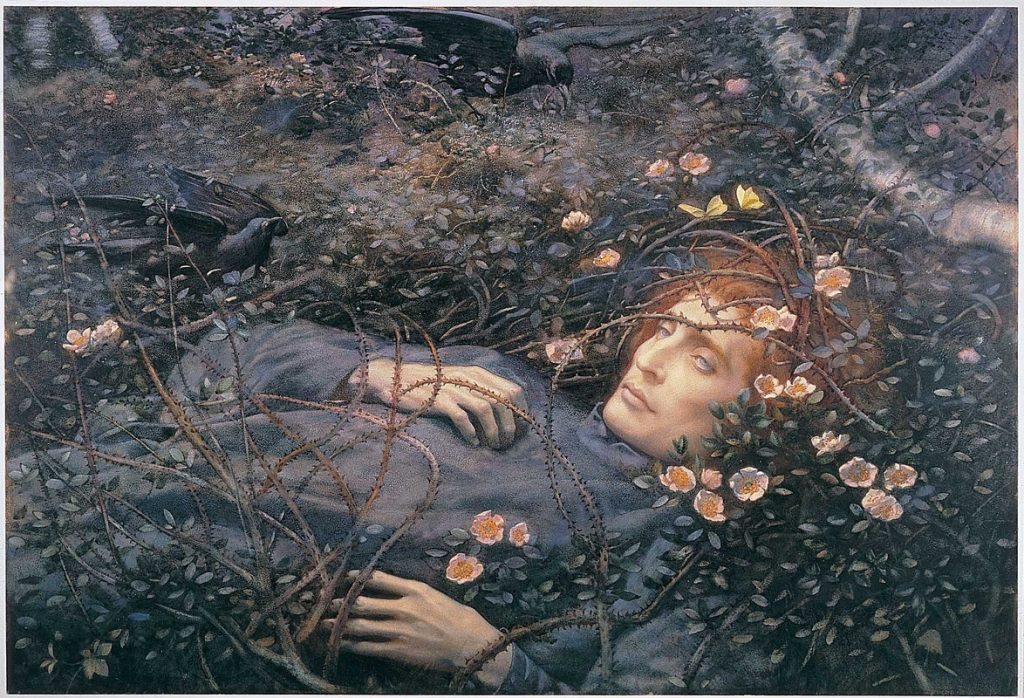
Hughes’s contribution to the arts extended beyond his painting. He was also a talented watercolorist and illustrator, contributing to the burgeoning field of book illustration during the late 19th and early 20th centuries. His illustrations for works such as George MacDonald’s “At the Back of the North Wind” and William Shakespeare’s plays are celebrated for their intricate detail and imaginative power, perfectly complementing the textual narrative.
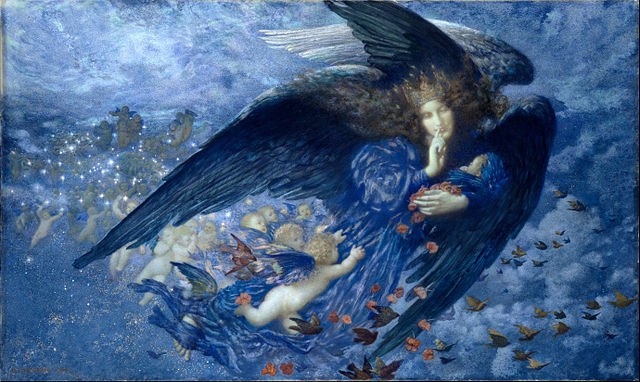
One of the defining aspects of Hughes’s work was his ability to convey emotion and atmosphere through his exquisite use of color and light. His paintings often feature a soft, diffused light that lends a gentle, ethereal quality to his subjects, whether they are serene landscapes or figures caught in moments of contemplative solitude. This mastery of light not only highlights his technical prowess but also his ability to evoke a sense of transcendence and timelessness.
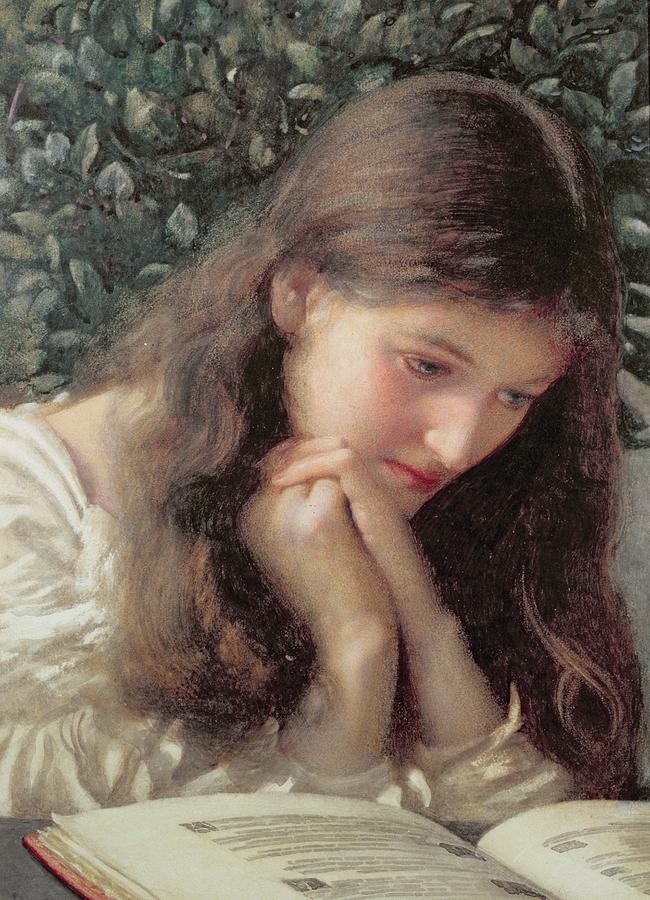
Despite his considerable talents and contributions to the Pre-Raphaelite and Symbolist movements, Edward Robert Hughes did not achieve the same level of fame as some of his contemporaries during his lifetime. However, in recent years, there has been a resurgence of interest in his work, with art historians and collectors alike recognizing the unique blend of romanticism, realism, and symbolism that characterizes his oeuvre.
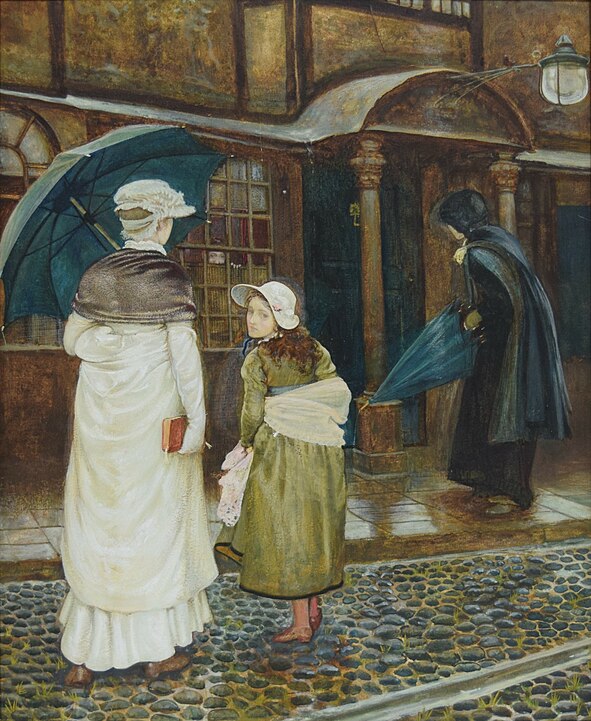
Edward Robert Hughes passed away on April 23, 1914, in St. Albans, England. Today, he is remembered as a significant, though somewhat overlooked, figure in the transition from the Pre-Raphaelite movement to Symbolism. His legacy is that of an artist who bridged two major artistic movements, creating works that continue to enchant and intrigue with their beauty, complexity, and ethereal quality.

